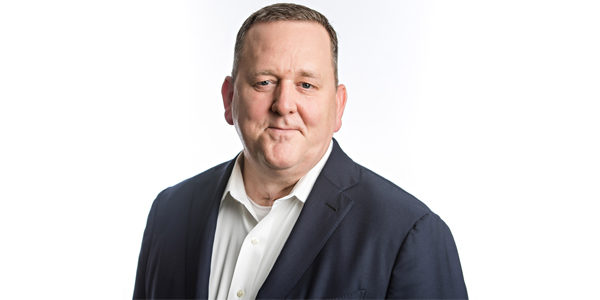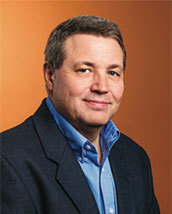Scott Watts of Dematic

Scott Watts is executive vice president, North America, and CEO, Americas, at Dematic, an international provider of material handling systems and solutions and part of the Kion Group. Watts has had success in building and managing technical service businesses in several industries, including a previous stint as president and COO of Celerity Logistics. He recently spoke with DC Velocity Editorial Director David Maloney.
Q: Scott, in your role as an executive with a large material handling company, where do you see this market heading in 2019?
A: There are many differing opinions on that topic, but everyone agrees that wherever it is going, it is trying to get there fast. We see plenty of cause for continued strength in MHE [material handling equipment] as our customers place their omnichannel bets, but we live in interesting times and things can pivot quickly. We are strengthening relationships across our entire supply chain in order to quickly respond to changes in our market.
Q: You've had experience with a number of firms in your career, including food manufacturing, technical services, automotive, and telecommunications companies. How has that background served you in your current leadership role?
A: It has taught me to be comfortable with uncertainty, and regardless of the impression we might try to give about how much we have things under control, a significant amount of our roles as leaders is to engage with the uncertainties faced by our teams and organizations. My varied experience has also taught me the value of relying on my team as co-partners in the leadership of the organization. I value the contextual knowledge I have gained from different companies in different industries, but I rely heavily on the domain knowledge of the professionals I work with in my team who have built their careers in this industry. We have a great group of leaders in our organization who are driven to do more and better things for our customers, and I try to bring some new perspectives to that effort.
Q: You are probably one of the few material handling senior executives to hold a Black Belt in Six Sigma. Why did you feel that certification was important to your work within the industry?
A: Change is happening in our industry and our business at a lightning pace, and I wanted to make sure the change we drive at our company is truly customer-centered, purposeful, fact-driven, and effective. The temptation to flutter from change to change in search of an answer is difficult to resist in an environment where there are more questions than answers. Having been around practitioners of Lean/Six Sigma in the past, I believed theirs is a great method for clarifying our change focus and for translating our objectives into concrete and controlled actions. My decision to study this field was based solely on my desire to understand the concepts more deeply and to understand the language of Lean better, so I could provide effective support to those people in our company who are true practitioners of Lean/Six Sigma. It has been valuable.
Q: Dematic is a company that has added many designers, engineers, and technicians as it has grown over the past several years. Finding good people is always difficult. What does Dematic do to attract the talent it needs?
A: We are doing a number of things to bring more and more people in our doors, including hiring into our regional offices and recruiting from a more diverse base of trade schools and universities, but keeping people is the far more important piece for us than is the initial recruitment. Ultimately, we believe we will attract and retain the best by being the best. We work hard to create an environment where our team members can contribute, create, innovate, collaborate, and succeed for our customers.
Related Articles

Copyright ©2024. All Rights ReservedDesign, CMS, Hosting & Web Development :: ePublishing